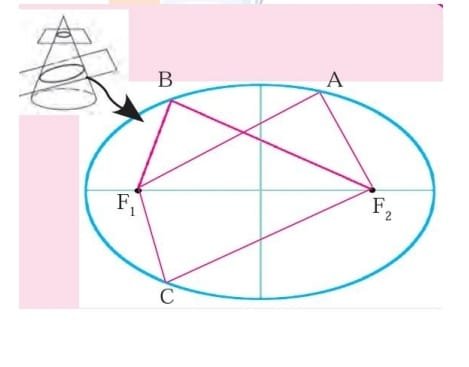FORCE – Any push or pull on an object is called force.
OR
It is the physical quantity that changes or tends to change the
state of rest or of motion.
- EFFECTS OF FORCE ON AN OBJECT –1. Moves a body at rest
2. Cause s moving object to change its speed.
3. Cause moving object to change its direction
4. Change shape and size of an object.TYPES OF FORCES –
A)Contact force –
When a force acts on two objects when they are in direct
contact with each other, it is said to contact force.
Ex. - Muscular force (when we use our muscles on any object)
(Ex. Kicking a ball, pushing an object - Frictional force (force exerted by a surface when an object
moves across it)
(Ex. A vehicle stops when we apply brakes) - Elastic force (force exerted by an elastic object)
(Ex. Force by rubber) - Applied force (when a person or an object exerts a force
on another object)(Ex. Book kept on table) - Spring force (when a stretched or compressed spring exerts a force)
B) Non-contact force –
When a force is applied between two objects even if the two
objects are not in contact, such force is non-contact force.
Ex.
- Gravitational force (force of attraction exerted by any
object on the other object)
(Ex. Apple falling from a tree) - Electrical force (Force due to electric field)
(Ex. Device running on electricity, when an electric
current is passed through iron converting it into an
electromagnet, it attracts iron and particles towards it.) - Magnetic force (Force due to magnets)
(Ex. Iron gets attracted towards magnet) - Static force / Electrostatic force (the force between two
objects when their surfaces are rubbed on each other)
(Ex. The charging of the hair and attraction of paper bits
towards itGRAVITATIONAL FORCE –
- It is the force of attraction between any two objects in the
universe. - Discovered by Sir Isaac Newton (Explained in book
PRINCIPIA)
CENTRIPETAL FORCE –
- The force acting on any object in a circle and directed
towards the centre of the circle is called centripetal force. - In short, it is centre seeking force. i.e., due to this force, the
object tries to go towards the centre of the circle.
Ex. Motion of moon around the earth.
KEPLER’S LAWS –
Johannes Kepler studied about planetary positions and motions and stated three laws.
Ellipse –
An ellipse is the curve obtained when a cone is cut by an
inclined plane. It has 2 foci. The sum of distances of the 2 foci from every point on the curve is constant

Here, AF1 + AF2 = BF1 + BF2 = CF1 + CF2 = Constant
(When the distance between the planet and the sun is
minimum, then the planet moves comparatively faster and when the distance between the planet and the sun is maximum, then the planet moves comparatively slower.)
First law – The orbit of a planet is an ellipse with the Sun at one
of the foci.
Second law – The line joining the planet and the Sun sweeps
(Covers) equal areas in equal intervals of time.
AB and CD are distances covered by the planet in equal time.
Here, area ASB and CSD are equal.
Third law – The square of period of revolution of the planet
around the Sun is directly proportional to the cube of the mean distance of a planet from the Sun.
If T is the period of revolution of the planet and r is the average
distance of planet from the sun.
Then, T2 α r3
i.e., T2 / r3 = constant
If the area ESF in figure 1.4 is equal to area ASB, what will you
infer about EF? (Page number 4)
According to Kepler’s second law, if area of ESF = area of ASB,
then, AB and EF are distances covered by the planet in same
time.
- NEWTON’S UNIVERSAL LAW OF GRAVITATION –
Every object in the universe attracts every other object with a
definite force.
This force is directly proportional to the product of the masses
of the two objects and inversely proportional to the square of
the distance between them.When two objects m1 and m2 are kept at a distance ‘d’ from
each other,
According to law,
F α m1xm2 ……………. 1
F α 1/d² ……………. 2
Combining 1 & 2
F α m1xm2
d²
֒F = Gm1 m2
d2
Here, G is proportionality constant and is called universal
gravitation constant.
Gravitational constant:
It is the force of attraction between any two-unit masses
separated by a unit distance.
SI unit of G – Nm²/kg²
Its value was calculated by Henry Cavendish as 6.673 ×10
ˉ¹¹Nm²/kg²
If the mass of one object is doubled, the force between the 2
objects also doubles.
If the distance is doubled, th
